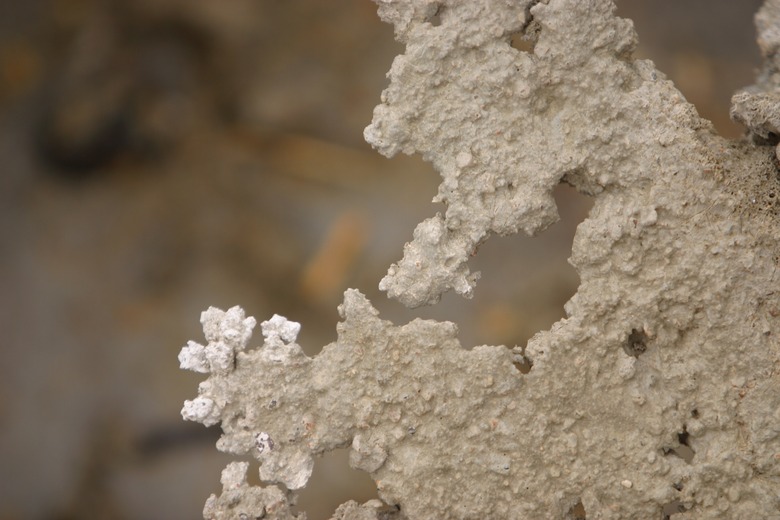Making Crystals At Home For Science Projects
Diamonds, snowflakes, table salt — though very different from each other, all are crystals, formed from liquids or minerals arranged in a uniform matrix at the atomic level. They grow from a seed, or small imperfection around which the crystal coalesces. The growth of a crystal garden depends on capillary action to carry water and dissolved substances to the surface of an object, where the dissolved substance forms a crystal when the water evaporates.
Growing a Crystal Garden
Step 1
Place your porous substrate chunks in the container. The container should be small enough so the substrate soaks in the liquid and shallow enough that it gets air circulation. The pieces should fill the container, but all of them need to touch the bottom of the container so they can absorb the crystal making solution.
Step 2
Mix the salt, liquid bluing, water, and ammonia in the bowl, dissolving as much salt as possible. The bluing will stain, so take care as you mix. It is fine if there is a little salt left in the bottom of the bowl.
Step 3
Pour the mixture over the substrate chunks. It will not be absorbed and will sit in the bottom of the container. Some salt may remain on top of the substrate, but this will only provide extra seeds for your crystals to form around.
Step 4
Place drops of food coloring on top of the substrate to color the crystals as they form. Using more than one color will give you multicolored crystals.
Step 5
Wait a day or two for your crystals to form. Capillary action will draw the salty water up through the substrate where the liquid will evaporate and the salt left behind will form a crystal. The ammonia speeds evaporation and the bluing changes the structure of the crystals so that they grow.
Things Needed
- 2-inch deep container made of any watertight material, ideally 4 inches wide x 4 inches long or 5 inches in diameter
- Chunks of porous substrate (charcoal briquettes, pieces of brick, or torn up sponges)
- 4 tablespoons kosher salt
- 4 tablespoons liquid bluing (also called laundry bluing)
- 4 tablespoons water
- 2 tablespoons ammonia
- Bowl
- Spoon
- Food coloring
TL;DR (Too Long; Didn't Read)
You can find liquid bluing in the laundry section of the grocery store. You can keep your garden growing by adding a few tablespoons of salt on the second day and more of the crystal-forming solution after that. If you add more solution, make sure to add it to the bottom of the container so it doesn't dissolve the crystals you've already grown.
Cite This Article
MLA
Becker, Andrea. "Making Crystals At Home For Science Projects" sciencing.com, https://www.sciencing.com/making-crystals-home-science-projects-9472/. 24 April 2017.
APA
Becker, Andrea. (2017, April 24). Making Crystals At Home For Science Projects. sciencing.com. Retrieved from https://www.sciencing.com/making-crystals-home-science-projects-9472/
Chicago
Becker, Andrea. Making Crystals At Home For Science Projects last modified August 30, 2022. https://www.sciencing.com/making-crystals-home-science-projects-9472/
